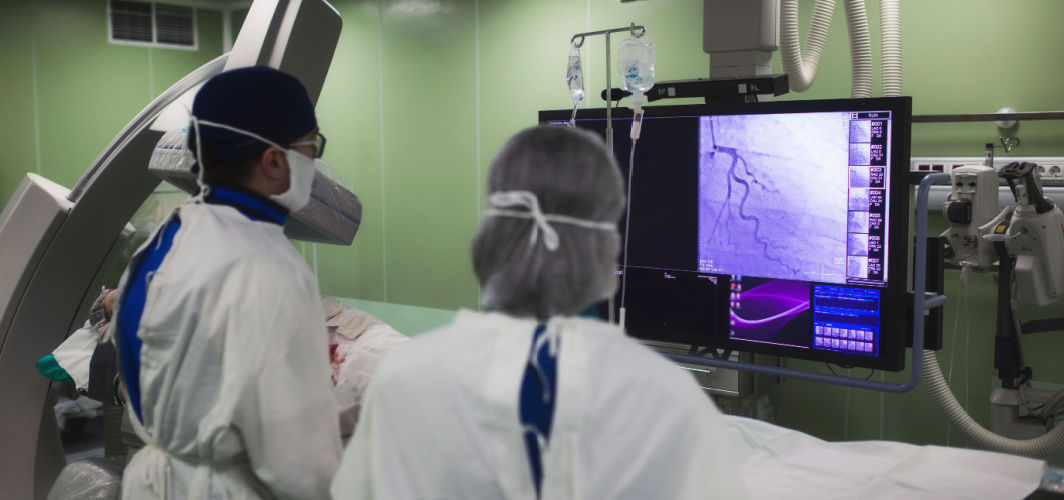Heart Conditions
A Hole In The Heart? Know Its Causes, Symptoms & Treatment
4 min read
By Apollo 24|7, Published on - 30 May 2023, Updated on - 16 June 2023
Share this article
0
0 like

We all have watched at least one TV series or movie, where one of the characters claims to have a “hole in their heart”! But is it a real disease? Well, an atrial septal defect (ASD), commonly called 'a hole in the heart', is a congenital heart defect between the upper chambers or atria. This condition can cause an increase in blood flow through the lungs, leading to complications over time. While small ASDs may not cause any issues and can sometimes close on their own during infancy or early childhood, larger and long-term ASDs can damage the heart and lungs, necessitating surgery to repair the defect and prevent further complications. It's important to seek medical attention if symptoms appear, as early diagnosis and treatment can improve outcomes.
What Is A Hole In The Heart?
The heart comprises four chambers - two atria (upper chambers) and two ventricles (lower chambers). The wall or layer that separates one atrium from the other is called a septum. The right side pumps blood to the lungs for oxygenation and the left side pumps oxygenated blood to the rest of the body through an artery called the aorta. When there is a hole between the two upper chambers of the heart (known as an atrial septal defect), it can cause weakening of the right side of the heart and result in increased pulmonary blood pressure, especially in the case of larger defects.
Types of Atrial Septal Defects
ASDs are classified into different types based on their location. These types include:
- Secundum, the most common type of ASD, occurs in the middle of the atrial septum between the upper heart chambers (atria).
- Primum ASD affects the lower part of the atrial septum and may be accompanied by other congenital heart defects.
- Sinus venous is a rare type of ASD that occurs in the upper part of the atrial septum.
- The coronary sinus is another rare type of ASD with a defect in the wall between the left atrium and the coronary sinus (a part of the heart's vein system).
Symptoms of Atrial Septal Defects
ASDs may not present with any symptoms in infants. However, signs or symptoms can develop in adulthood, which include:
- Shortness of breath during exercise or exertion
- Fatigue or decreased energy levels
- Swelling of the legs, feet, or abdomen (due to fluid buildup)
- Irregular heart rhythms or palpitations (a feeling of a racing, fluttering, or pounding heartbeat)
- Heart murmur (a whooshing sound that can be heard using a stethoscope)
Atrial Septal Defect Diagnosis
ASD can be diagnosed during routine physical exams or screenings, like prenatal ultrasounds or newborn screenings. Additional tests that may be needed to confirm the diagnosis, if symptoms of ASD develop later in life, include:
- Non-invasive electrocardiogram (ECG) to measure the electrical activity of the heart.
- Chest X-ray to reveal heart or lung enlargement.
- Echocardiogram to create images of the heart and assess the size and location of the defect.
- Invasive cardiac catheterisation to inject contrast dye to see the defect's impact on blood flow.
Treatment for Atrial Septal Defect
Small atrial septal defects (ASDs) may not require any treatment. However, larger and long-term ASDs may require surgical intervention to prevent complications. And, these surgeries include:
- Patch closure: This involves sewing a patch over the hole to seal it shut.
- Device closure: It involves inserting a special device through a catheter into the heart to plug the hole.
- Open-heart surgery: This may be necessary for larger or more complex ASDs. It involves opening the chest with an incision and repairing the defect while the heart is stopped and the patient is on a heart-lung machine.
In addition to surgical intervention, individuals with ASDs may need to take blood thinners to prevent blood clots or medications to manage irregular heart rhythms.
When to Seek Emergency Medical Attention?
Seek immediate medical care if you experience any of the following symptoms:
- Difficulty breathing or shortness of breath
- Chest pain or discomfort
- Fainting or loss of consciousness
- Irregular or fast heartbeat
- Bluish hue on the lips or skin (cyanosis)
Can you prevent a hole from forming in the heart?
While the cause of the atrial septal defect (ASD) is not fully understood, certain steps can be taken to reduce the risk of congenital heart defects in general. These include:
- Get regular prenatal care to manage health conditions that may increase risk.
- Avoid substances like alcohol, tobacco, and illegal drugs, and discuss medication use with your healthcare provider.
- Properly manage chronic health conditions like diabetes and lupus during pregnancy.
- Get vaccinated to prevent infections like rubella and cytomegalovirus.
- Reduce exposure to environmental toxins like lead.
In conclusion, atrial septal defect (ASD) is a congenital heart condition that may lead to complications if untreated. Surgical intervention may be necessary to repair larger or long-term defects, while small ones may not require treatment. Seeking medical attention if symptoms arise can improve outcomes. Preventative measures during pregnancy, like regular prenatal care and substance avoidance, may help lower the risk of congenital heart defects. For more information,
Consult Apollo’s Expert Cardiologists
Medically reviewed by Dr Sonia Bhatt
Heart Conditions
Leave Comment
Recommended for you

Heart Conditions
Alcohol & Heart Health: How Much is Safe to Drink?
Excessive consumption of alcohol is associated with an increased risk of high blood pressure, heart failure, stroke and other complications.

Heart Conditions
Know The Difference Between Angiography And Angioplasty
Angiography and angioplasty are two of the most commonly used procedures to detect and treat heart conditions. Learn about their uses, benefits, risks and how they can help diagnose and treat cardiovascular conditions.

Heart Conditions
What Causes Heart Block in Athletes?
It has recently been reported that continuous endurance exercises can lead to the development of heart blocks in athletes and other sports players.
Subscribe
Sign up for our free Health Library Daily Newsletter
Get doctor-approved health tips, news, and more.
Visual Stories

Lower Your Cholesterol Naturally with These 7 Foods
Tap to continue exploring
Recommended for you

Heart Conditions
Alcohol & Heart Health: How Much is Safe to Drink?
Excessive consumption of alcohol is associated with an increased risk of high blood pressure, heart failure, stroke and other complications.

Heart Conditions
Know The Difference Between Angiography And Angioplasty
Angiography and angioplasty are two of the most commonly used procedures to detect and treat heart conditions. Learn about their uses, benefits, risks and how they can help diagnose and treat cardiovascular conditions.

Heart Conditions
What Causes Heart Block in Athletes?
It has recently been reported that continuous endurance exercises can lead to the development of heart blocks in athletes and other sports players.
